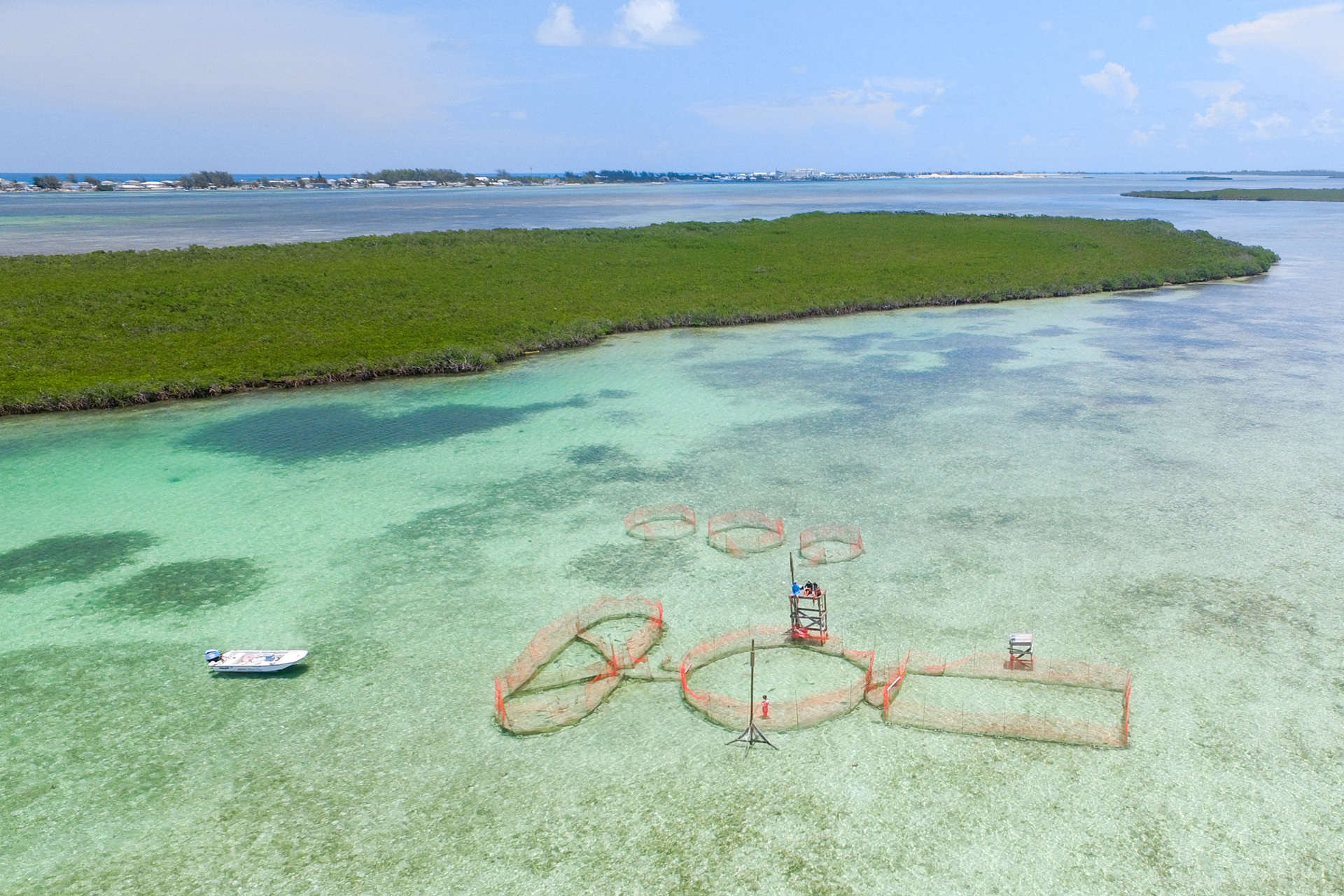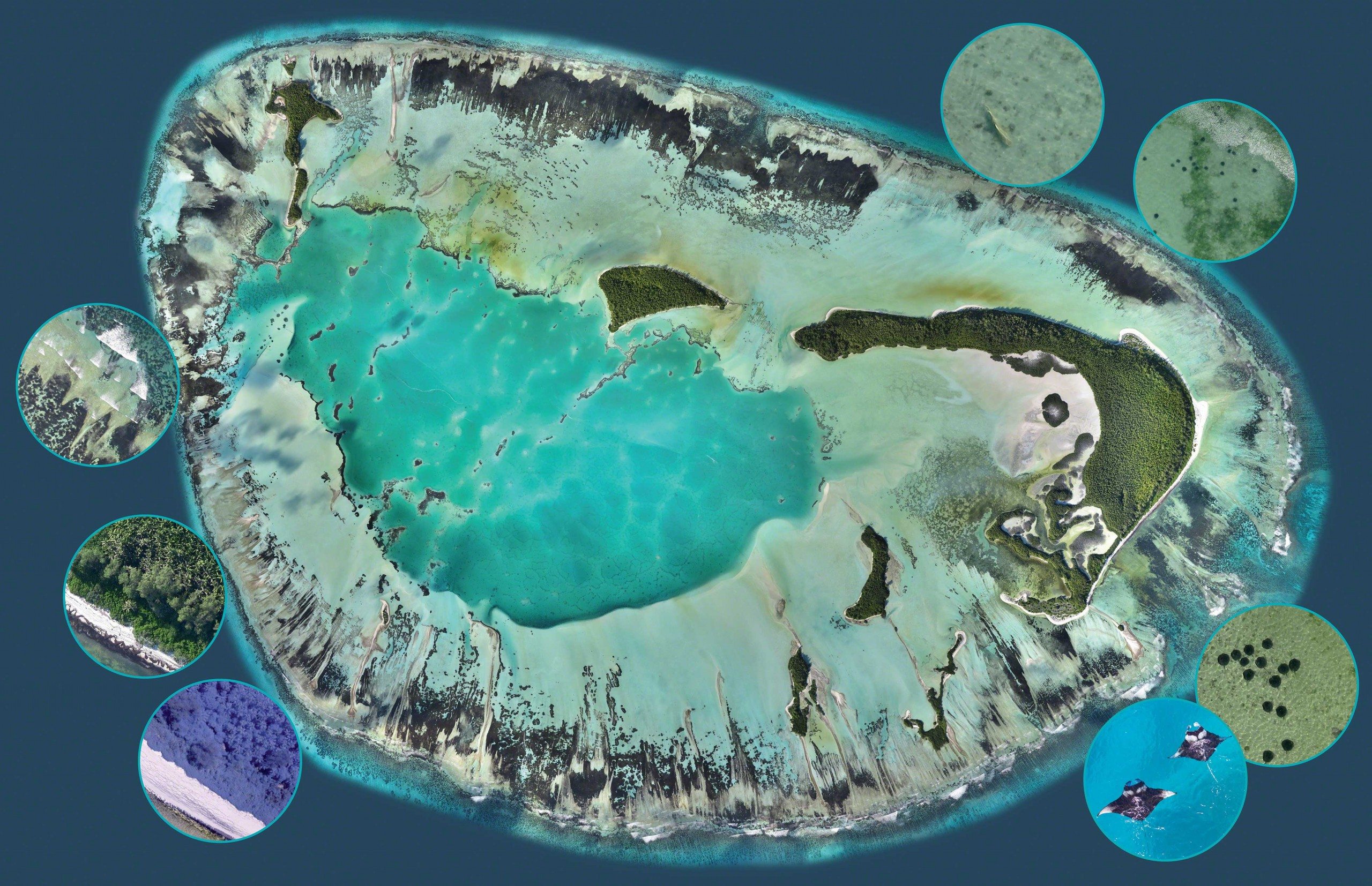Shark science: the sky is the limit
In less than a decade, drones have rapidly become indispensable to the world of film and photography. Their reach is ubiquitous as people now use them for everything from personal and professional filming, to conservation management and research.
Their key benefit to researchers is the ability to observe animal behaviours and interactions in their natural environment remotely and without interference. They also provide a cost-effect aerial perspective that could previously only be achieved through expensive charters of planes and helicopters.
The freedom of perspective that drones provide enables researchers to witness and analyse interactions from afar. This means that there is less disturbance from humans on natural behaviour, and it reduces the impact on the natural environment. As such, drones enable us to capture the true nature of the animals in their habitat.

A drone image of a monitored mature lemon shark is fitted with an accelerometer in and a juvenile lemon shark in the shallows. Photo by Ryan Daly | © Save Our Seas Foundation
Drones have proven particularly useful in the field of shark science. A recently published paper The drone revolution of shark science looks at how drones have advanced our understanding of shark behaviours and movements, social interactions, and predation across multiple species and scenarios, while also minimising risk for humans. The Save Our Seas Foundation is a proud supporter of this pioneering research, having over the years been involved with several innovative shark research projects that have made use of drones.

Situated between the Bimini lagoon and some mangrove islands, the project location attracted an incredible diversity of wildlife. Photo © Sirachai Arunrugstichai | Save Our Seas Foundation (Jack Massuger as drone pilot).
Drone Projects supported by SOSF
Save Our Seas Foundation CEO, James Lea was the lead author on a paper that establishes the benefits of using drones to study the richness and behaviour of scavengers attracted to a carcass. The team recorded over 30 sharks of 3 species (tiger shark, bull shark and tawny nurse shark) scavenging on the carcass of a sperm whale in Seychelles, Western Indian Ocean. Tiger sharks dominated the scavenging, but with no evidence of agonistic behaviours or hierarchy, and may have facilitated scavenging by other species.
Drones across the water – Sonja Betschart
In the 2016 Save Our Seas Foundation Magazine, Sonja Betschart from Drone Adventures wrote about how she and her team assisted Save Our Seas Foundation researchers in mapping the vast area of the St Josephs Atoll marine protected area by using drones and state of the art mapping technologies.

This high-resolution map is a composite of thousands of images captured with drones flying simultaneously. The software ensures that any moving objects are discarded, but the circular images show some of the fauna and flora that was recorded during low-altitude flights.
Drone diaries of The Bahamas – Stephanie Buhler
Do human activities drive the distribution and abundance of coastal shark species?
The key objective of this project is to use a novel technique to assess the abundance and distribution of shark species in relation to human populations. We will generate baseline information for shark conservation on Abaco and refine a protocol for shark population assessment in The Bahamas. Lastly, we will use our findings for local and national outreach.
Shark spy: bird’s eye view – Johann Mourier
Using drones to investigate the abundance of sharks and rays in shallow water habitats
We aim to develop and adapt drones to monitor elasmobranch populations in tropical marine shallow waters, with a special focus on juvenile sharks and adult rays. We will first establish a data collection protocol and then apply it to estimating shark and ray population abundance in Moorea, French Polynesia.

(Left) Graduate researcher Braden Ruddy flying a drone off of Singer Island, Fl; (Right) FAU Elasmolab boat following an aggregation of Blacktips. Photos © Braden Ruddy
Migration mechanics, USA – Marianne Porter
Migration mechanics: understanding swimming kinematics of a marine apex predator
This study will capitalise upon the unique blacktip aggregation to assess the impact of climate change on migratory marine predators. Warming oceans drive the sharks to higher latitudes, increasing the distance of their annual migration and energetic costs en route. We aim to examine the movement ecology of blacktip sharks.
Sawfish aerial survey – James Kilfoil
The Bahamas is home to a rare population of smalltooth sawfishes, one of the most endangered animals in our oceans. James will explore the use of drones as a safe and non-invasive way of studying these prehistoric marine animals.
Project AIRSHIP – Kye Adams
A novel, non-invasive and continuous approach to detecting sharks at our beaches
Aerial cameras have the potential for mitigating the risk of shark-human interactions with zero by-catches. We aim to improve/automate current approaches to shark detection systems such as drones or aerial patrols. We are currently testing a blimp-mounted camera prototype, designed to provide continuous aerial coverage of swimming/surfing areas.
Sawfish conservation, Mexico – Ramon Bonfil
Sawfishes are among the ocean’s most endangered species and until very recently they had never been studied in Mexico. Ramón is using new technologies and a multidisciplinary approach to find and eventually protect Mexico’s smalltooth and largetooth sawfishes.

A drone ready for take-off from our ‘aircraft carrier’. The same technique is used for landing. Photo © Ramón Bonfil
